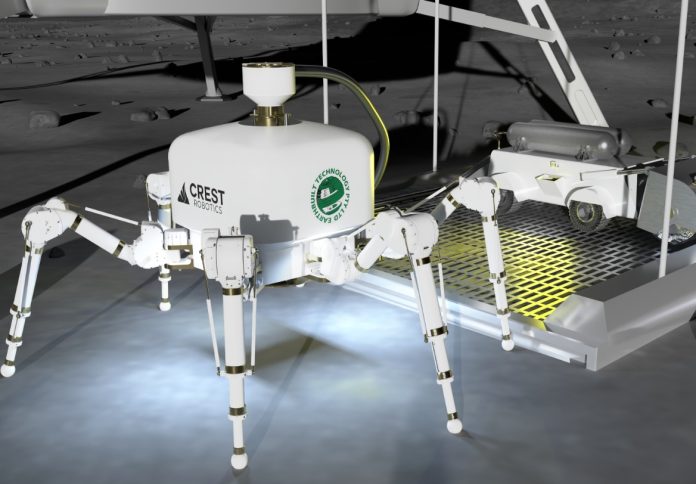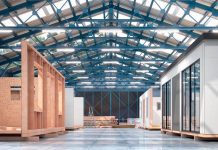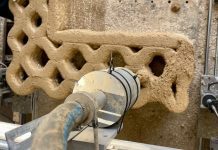
Crest Robotics and Earthbuilt Technology will present a new robot designed for both lunar exploration and sustainable housing construction on Earth at the 76th International Astronautical Congress (IAC) 2025 in Sydney.
The robot, named “Charlotte,” has been developed with support from the NSW Space+ Program, delivered by SmartSat CRC and funded by the NSW Government.
The companies said the technology combines advanced robotics with building innovations to provide low-cost, low-carbon housing options on Earth, while also offering potential applications for constructing shelters on the Moon.
Dr Clyde Webster, founding director of Crest Robotics, said Charlotte’s spider-like design was created to adapt to different construction environments.
“Crest Robotics was founded to improve safety, productivity, and cost-effectiveness of the blue-collar workforce, addressing critical labour and productivity crises in sectors including construction and energy,” Dr Webster said.
“These principles underpin Charlotte, which is designed to take the heavy lifting out of building construction, both here and on the Moon, where the technology is being considered for its high sustainability and suitability for the lunar environment.”
He added that traditional machinery would not be practical for lunar construction. “Building a lunar base is no small feat, and it will require different technologies than what we currently use on Earth. Aside from the impracticality of sending heavy hydraulic machinery to the Moon, the conditions on the Moon do not readily facilitate maintenance or robust operations for this type of equipment.”
“Charlotte is a modern approach to machine development, embodying the new ‘dynamics’ approach to robotic design, yielding machines that are more autonomous, versatile, and efficient, making them suitable for space exploration and fast construction,” Dr Webster explained.
When paired with Earthbuilt’s extrusion and compaction system, Charlotte is expected to enable fully autonomous construction using natural and readily available materials, cutting supply-chain costs and reducing carbon output.
The companies said the system could assemble a standard 200m² Australian home in a single day with zero carbon emissions, at speeds significantly faster than traditional methods.
Jan Golembiewski, founder and CEO of Earthbuilt Technology, explained how the process works. “Every step of building a home requires human input, which adds costs and carbon. With supply-chains longer and more complex than ever, materials have become increasingly expensive, carbon-intensive and wasteful. Earthbuilt reverses this,” Golembiewski said.
“Making a simple brick, for example, requires around 50 different processes and inputs. By contrast, Earthbuilt’s technology uses only three: earth, fibre and energy. When integrated with advanced robotics, Charlotte’s efficient and lightweight design minimises energy expenditure.”
Golembiewski added that the system draws inspiration from Indigenous approaches to sustainable construction.
“With productivity declines at a magnitude we haven’t seen before, we can address the housing crisis and labour shortage with a technology that is clean, efficient, cost-effective and inspired by the Indigenous ways of building dwellings. After demolition, because construction is from raw materials in the surrounding environment, there will be no sign that the structure existed.”
According to the companies, the technology is designed to be flood- and fire-resistant and to operate in the Moon’s harsh conditions, including low gravity.
















